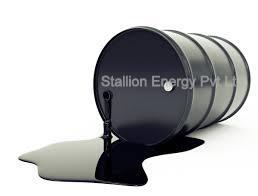Asphalt also known as bitumen, is a sticky, black and highly viscous liquid or semi-solid that is present in most crude petroleum’s and in some natural deposits, it is a substance classed as a pitch. The primary use of asphalt is in road construction, where it is used as the glue or binder mixed with aggregate particles to create asphalt concrete. Its other main uses are for bituminous waterproofing products, including production of roofing felt and for sealing flat roofs. The terms asphalt and bitumen are often used interchangeably to mean both natural and manufactured forms of the substance. In American English, asphalt (or asphalt cement) is the carefully refined residue from the distillation process of selected crude oils.
Application
Road Construction
Roofing Sealant Manufacturer
|
CHARACTERISTICS
|
SPECIFICATIONS
|
||
|
VG-30
|
VG-40
|
(60-70)
|
|
|
Absolute Viscosity at 60°C,poises, Min.
|
2400
|
3200
|
-
|
|
Kinematic Viscosity at 135 °C, cSt, Min.
|
350
|
400
|
-
|
|
Specific Gravity at 27 Degree C, Min
|
Min. 0.99
|
Min. 0.99
|
-
|
|
Water, percent by mass, max
|
Max. 2.0
|
Max. 2.0
|
-
|
|
Flash Point, Cleveland open cup, (degree C, Min)
|
Min. 220
|
Min. 220
|
>250°C
|
|
Softening Point (degree C)
|
40 to 55
|
50
|
49-56
|
|
Penetration at 25 degree centigrade. 100g, 5 sec., 1/10mm
|
50 to 70
|
40 to 60
|
60-70
|
|
Ductility at 25°C ,cm,
|
Min. 40
|
Min. 25
|
>100
|
|
Viscosity ratio @ 60 degree C
|
Max. 4.0
|
Max. 4.0
|
-
|
|
Matter Soluble in trichloroethylene, Percent by mass,
|
Min. 99.0
|
Min. 99.0
|
-
|
|
Density, 25°C,(kg/m3)
|
-
|
-
|
1.010/1.060
|
|
Loss On Heating (%)
|
-
|
-
|
0.2 Max
|
|
Drop in Penetration after Heating (%)
|
-
|
-
|
20 Max
|
|
Solubility in sc2 (WT%)
|
|||
Definition:
A dark viscous residual fuel obtained by blending mainly heavier components from crude distillation unit, short residue and clarified oil from fluidized catalytic cracker unit.
Nomenclature:
Bunker fuel, furnace oil, Fuel oil are other names for the same product. Though Fuel oil is a general term applied to any oil used for generation of power or heat, Fuel oil can included distillates and blends of distillates and residue such as Light Diesel Oil.
Specification:
Furnace oil in the current marketing range meets Bureau of Indian Standards Specification IS : 1593 - 1982 for fuel oils, grade MV2.
Viscosity:
Viscosity is the most important characteristic in the furnace oil specification. It influences the degree of pre-heat required for handling, storage and satisfactory atomization. If the oil is too viscous it may become difficult to pump, burner may be hard to light and operation may be erratic. Poor atomization may result in the carbon deposits on the burner tips or on the walls. The upper viscosity limit for furnace oil is such that it can be handled without heating in the storage tank is excepting under server cold conditions. Pre-heating is necessary for proper atomization.
Flash Point:
As per the Controller of Explosives classification, Furnace oil falls in the class "C" category with minimum flash point standard of 66 deg. C. Since Penskey Martens Closed Cup method is used, it is apparent that a small quantity of low boiling point hydrocarbons is sufficient to lower the flash point drastically.
Pour Point:
It is a very rough indication of the lowest temperature at which Furnace Oil is readily pump able. In the specification the pour point of Furnace oil is not stipulated. However, for Furnace oil manufactured indigenously and for imported parcels, the pour point is such that current supplies normally can be handled without heating the fuel oil handling installation.
Water:
Water may be present in free or emulsified form and can on combustion cause damage to the inside furnace surfaces especially if it contains dissolved salts. It can also cause sputtering of the flame at the burner tip. Water content of furnace oil when supplied is normally very low as the product at refinery site is handled hot and maximum limit of 1% is specified in the standard.
Sediment:
Furnace oil being a blend of residues contains some quantity of sediments. These have adverse effect on the burners and cause blockage of filters etc. However, the typical values are normally much lower than the stipulated value of maximum 0.25 percent, by mass.
Ash:
Ash is incombustible component of the furnace oil and is expressed as a percentage mass of the furnace oil sample. Ash consists of extraneous solids, residues of organ metallic compounds in solution and salts dissolved in water present in the fuel. These salts may be compounds of sodium, vanadium, calcium magnesium, silicon, iron etc.
Ash has erosive effect on the burner tips, causes damage to the refractories at high temperatures and gives rise to high temperature corrosion and fouling of equipments.
Sulphur:
Sulphur determination includes burning of known quantity of oil, treating the sulphur oxidation products formed during combustion and weighing of sulphur in the form of sulphate.
The sulphur di-oxide may come in direct contact with the product during the combustion process and may create adverse quality effects in the product.
Calorific Value:
Calorific value of a fuel is the quantity of heat generated in kilocalories by complete burning of one kilogram weight of fuel. Gross calorific value is higher than net calorific value to the extent of heat required to change water formed by combustion into water vapours.
Application :
- As fuel for Power Generation in DG Sets
- As fuel for Boilers/ Furnaces/ Air preheater/ Any other Heaters
- Fuel for Bunkering
- Fuel/ Feedstock in Fertilizer Plants
TYPICAL PROPERTIES :
|
PARAMETER |
METHOD |
UNIT |
LIMIT |
RESULT |
|
|
MIN |
MAX |
||||
|
Acidity, Inorganic |
P:2 |
mg KOH/gm |
|
Nil |
NIL |
|
Ash |
P:4 |
|
0.1 |
0.04 |
|
|
Gross Calorific Value |
P:7 |
cal/gm |
|
To Report |
10378 |
|
Relative Density @ 15/15 °C |
P:16 |
|
|
To Report |
0.9442 |
|
Flash Point (PMCC) |
P:21 |
°C |
66 |
|
71 |
|
Kin. Viscosity @ 50 °C |
P:25 |
cSt |
|
180 |
160 |
|
Sediment |
P:30 |
Wt % |
|
0.25 |
0.03 |
|
Total Sulphur |
ASTM D 4294 |
Wt % |
|
4.0 |
1.7 |
|
Water Content |
P : 40 |
Vol % |
|
1 |
0.05 |
|
Pour Point |
P : 10 |
|
|||





